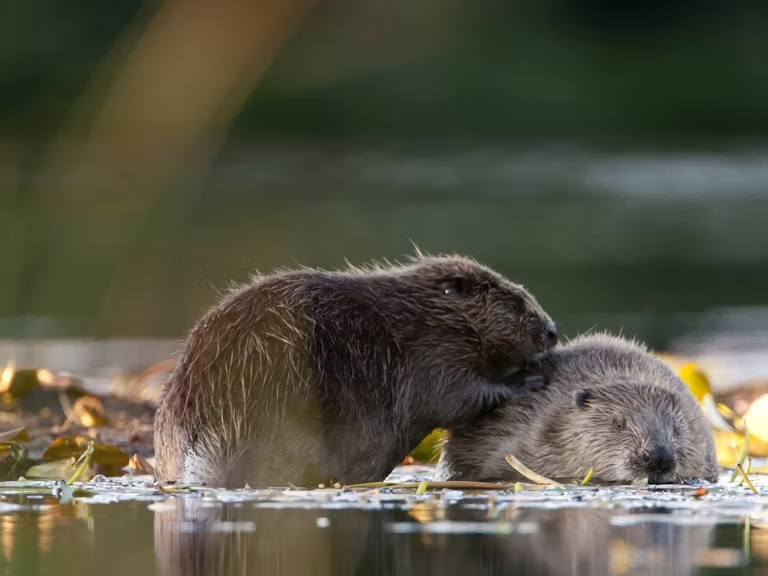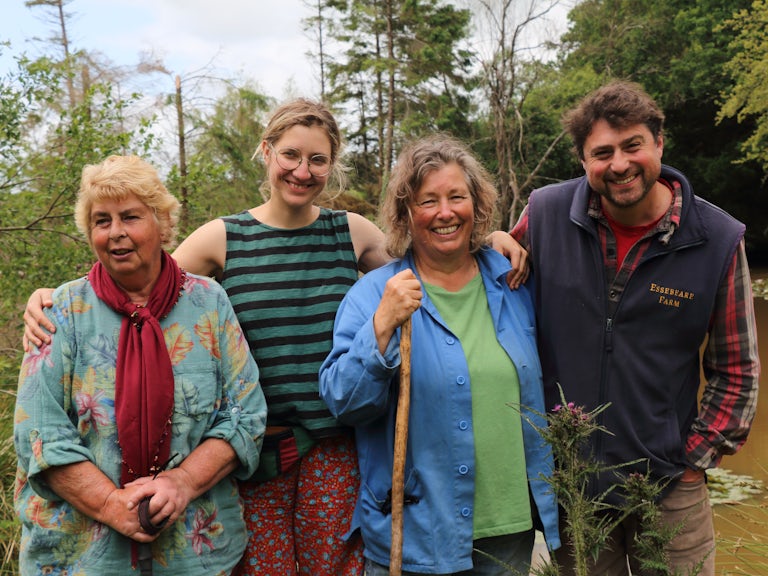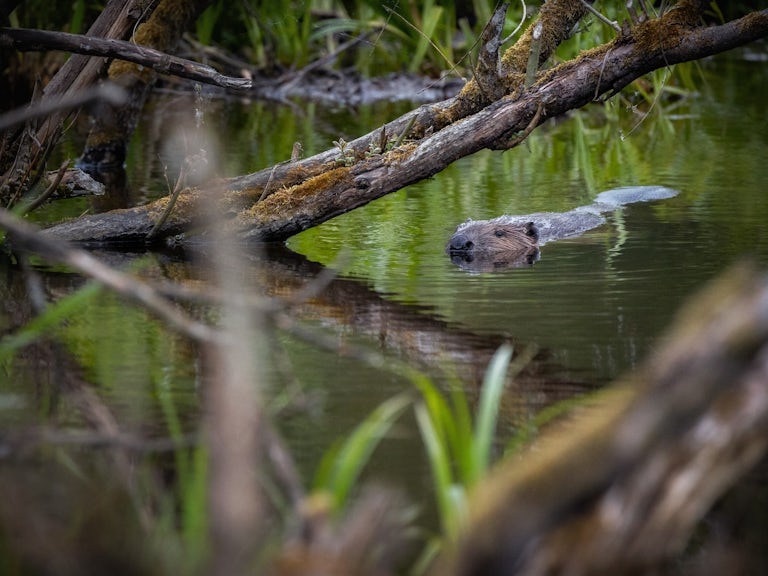What's so special about beavers?
Explore why we need these ecosystem engineers in Britain, how they shape landscapes, and why reintroductions make sense in the right places.

In any conversation about rewilding it’s not long before the topic of beaver reintroductions comes up. But what is so special about beavers, and why are we eager for their return across Britain? Here are four amazing ecosystem services they provide, from mitigating extreme weather events to improving water quality to boosting biodiversity.
1. Beavers reduce flooding
The most obvious benefit we get from the Eurasian beaver (Castor fiber) is the dams and networks of watercourses that it creates, which can store vast amounts of water.
Beavers build dams to make the water around the entrance of their lodge deep enough to access safely, and also dig out new channels to serve as a safe way to explore their local area. Not only can this network of ponds and small ‘canals’ hold significant amounts of water, these intricate watercourses also push water out slowly into the surrounding soils, creating absorbent wetland habitats.
With many of Britain’s surface and river flooding events caused by too much rain falling too quickly, which then rapidly moves through our degraded landscapes, beaver engineering works can be a lifeline for communities living downstream. Findings from the River Otter Beaver Trial in Devon show that the beavers reduced flood flows by up to 60% , even when the weather had been very wet. By holding back the water in newly created wetlands and pools, water trickles out of the system at a much slower rate, which reduces the chances of flash flooding after storm events.
Between 2015 and 2021 the UK government spent £2.6 billion on flood defences, with this expenditure planned to double over the six subsequent years. Beavers could help us manage flooding at a fraction of the cost.
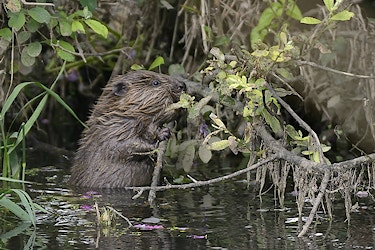
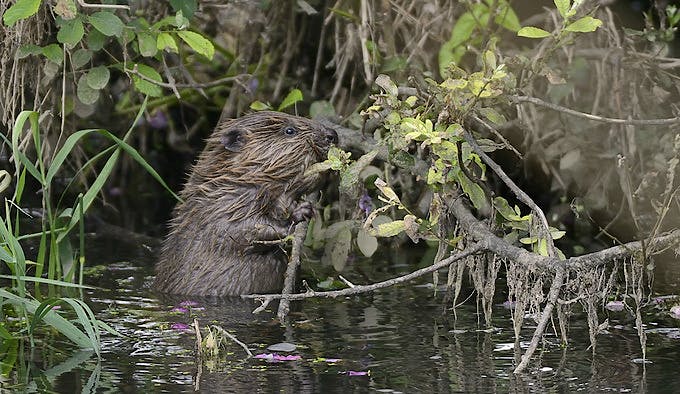
Beavers in Britain
Wild beavers , and those in captive release schemes, can be found across Britain. In both Scotland and England beavers have been declared a native species, where they now enjoy a European Protected Species status.
“Rewilding is a crucial tool in the toolbox for tackling the nature and climate emergencies. Beavers can do much of that rewilding completely free of charge in river and wetland environments.”
Professor Alastair Driver
Director, Rewilding Britain
2. Beavers lessen the impact of drought
The flip side of the coin is that beaver ponds and canals can also help us mitigate the effects of drought. Here in Britain, ‘drought’ is brought on by below average rainfall, which fails to replenish our water reserves over several months – and can have serious financial impacts on farmers in particular, whose crops and livestock are dependent on water to survive.
What’s so unique about beaver-shaped wetlands is that they continue to release water slowly into surrounding soils and downstream during dry periods, helping to keep water flowing. The study of a Canadian river catchment
found that, where beavers were active, there was 60% more open water present during drought than there had been prior to the beavers’ return. Early research on British beavers indicates similar benefits.
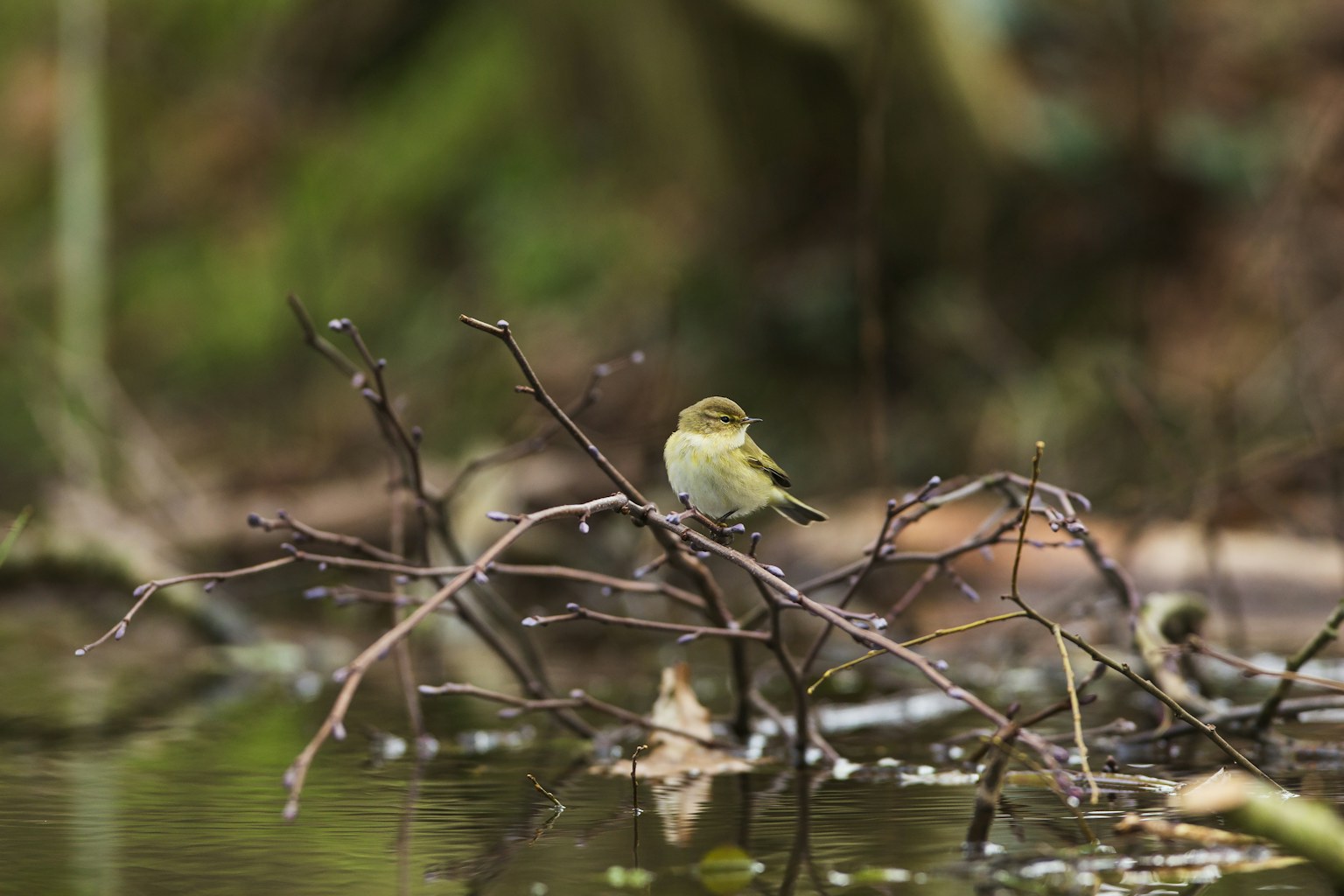
3. Beavers engineer a mosaic of habitats
In a few short years at the Devon Beaver Trial activity by beavers had already created a mix of wetlands, ponds, deadwood, open grassland, scrub and trees, plus areas of sphagnum moss – and similar results have been found elsewhere. This mosaic of habitats in turn supports a wealth of species, including dragonflies, butterflies, brown trout, salmon, as well as bat, bird, reptile and amphibian species. It’s not just that overall numbers increase; so does the variety and the rarity.
Beavers are territorial, staying close to their ponds and canals to gnaw on plants (contrary to popular belief, they don’t eat fish), meaning that these areas evolve differently from the areas they leave alone – all contributing to the rich diversity of their landscape. Favouring trees such as willow and aspen, their ‘coppicing’ effect on these species alters light levels in woodland and scrub, and other trees tend to increase as a result . The fallen trees create open meadow habitats, whilst new branches grow out of the coppiced tree creating new feeding opportunities for a range of wildlife.
See beavers in Britain
- https://www.rewildingbritain.org.uk/rewilding-projects/wild-ken-hill
- https://www.rewildingbritain.org.uk/rewilding-projects/bamff-estate
- https://www.rewildingbritain.org.uk/rewilding-projects/upcott-grange-farm
- https://www.rewildingbritain.org.uk/rewilding-projects/knepp-castle-estate
- https://www.rewildingbritain.org.uk/rewilding-projects/lowther-estate
4. Beavers improve water quality
As well as changing how water moves through our landscape, beavers also improve the quality of water. Several American and British studies have found that beaver ponds reduce nitrogen pollution in watercourses – with many of the nitrates digested by the bacteria in the pond, and others trapped by the sediments.
In Devon, beaver ponds have been shown to prevent sediments and pollutants from flowing downstream . Water entering them contained around 150mg of sediments, water leaving contained only 40g.
In Britain, where only 14% of UK rivers are in good ecological condition and around 70% of nitrate pollution in our rivers comes from agricultural run-off, beaver activity is key to limiting how much of this pollution remains in our waterways.
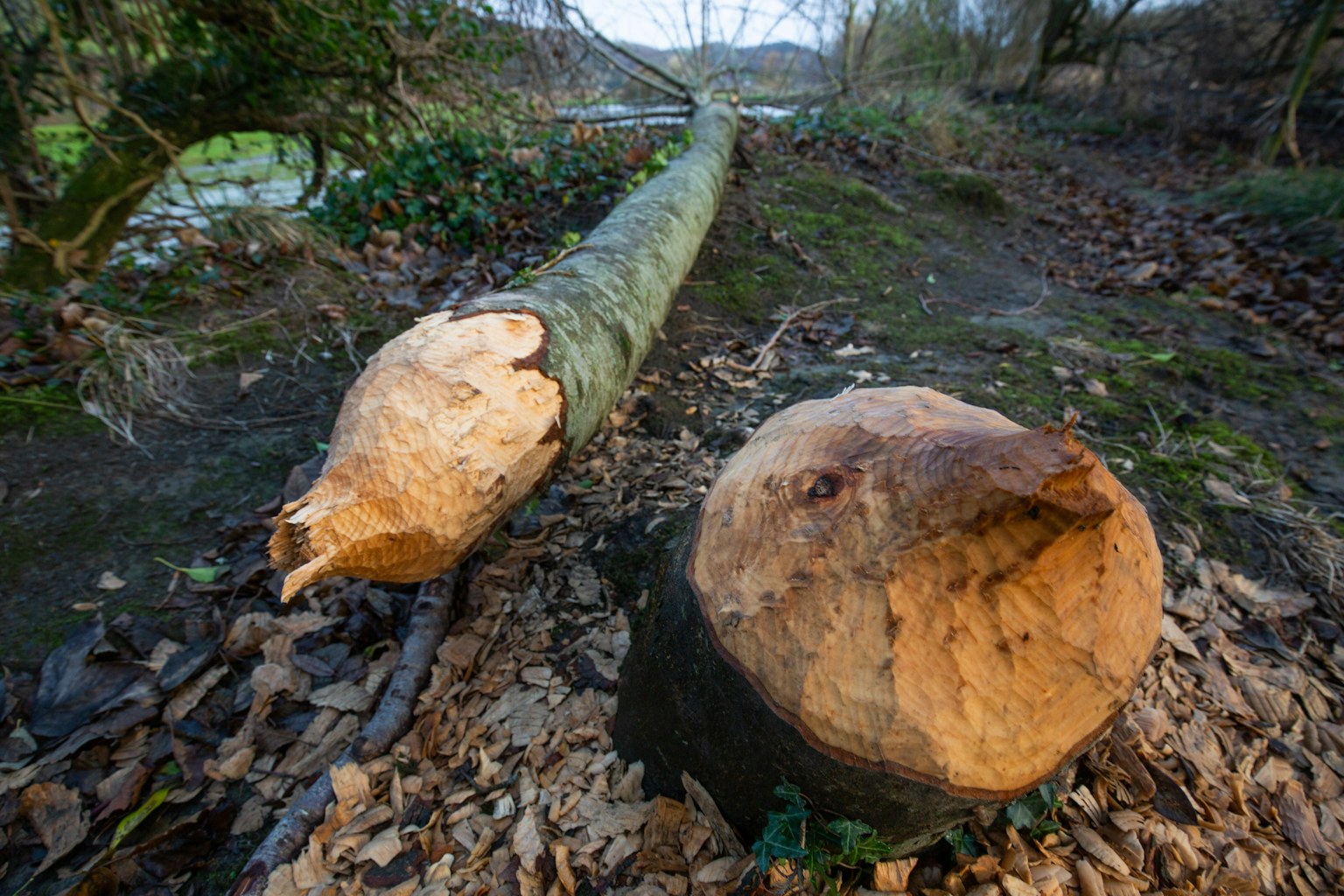
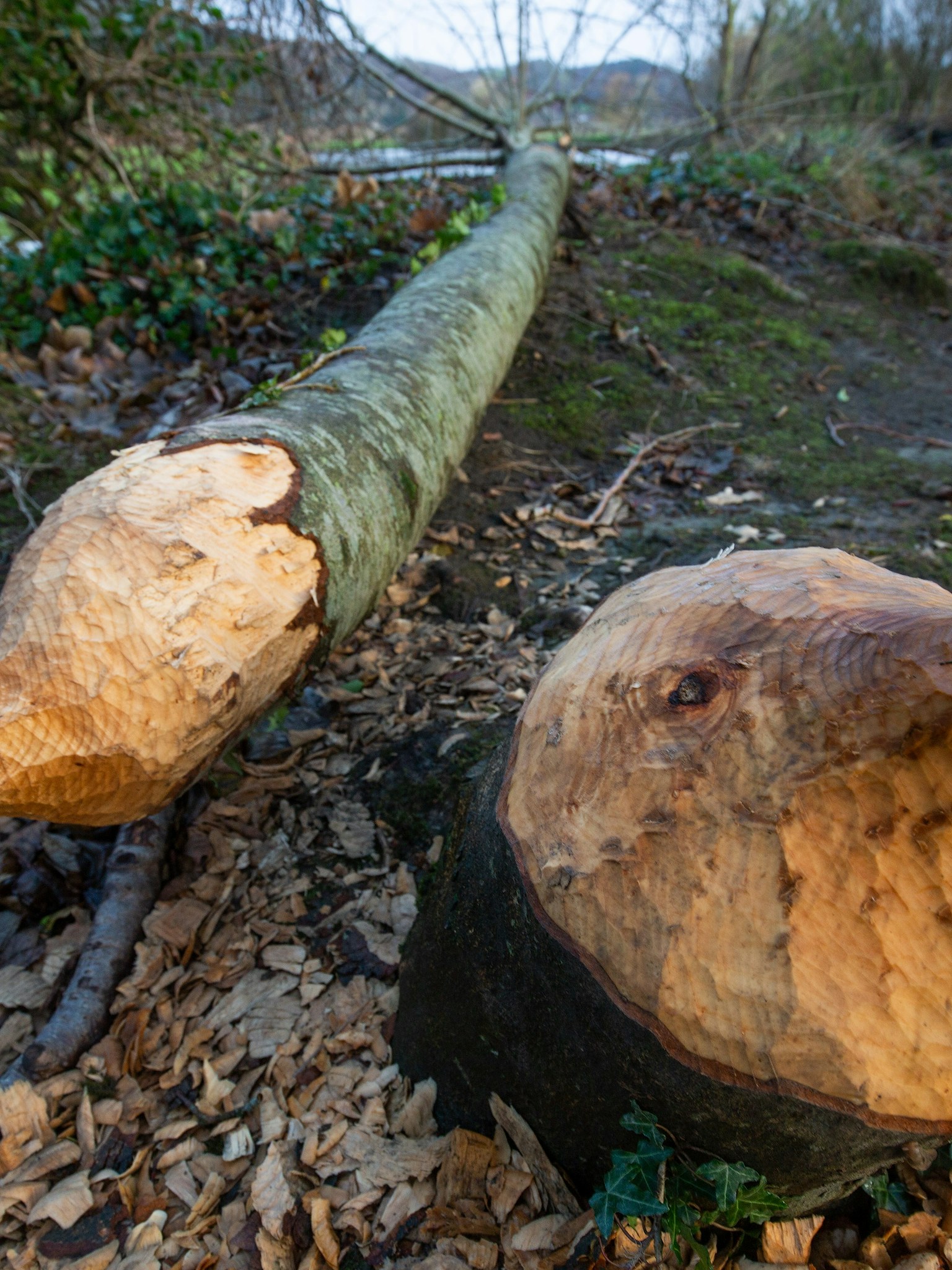
The Ultimate Engineer
60% reduction in water flows during flooding
73% fewer sediments in water downstream of beaver ponds
60% more open water during drought than before the beavers’ return
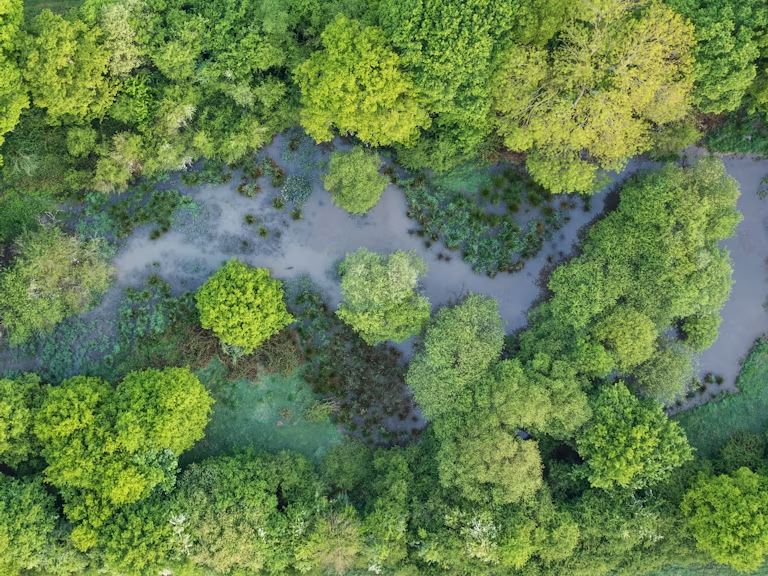
Explore our Rewilding Manifesto
We need UK Government to Think Big and Act Wild for nature, people and planet.
Learn more
Our vision
We have big ambitions. Find out what we’ve set out to achieve through rewilding.
Our 2025-2030 strategy
